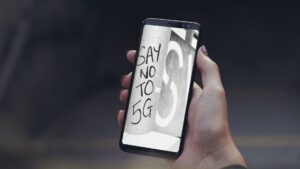In a social climate where we are constantly updated with real-time activity, it is easy for misinformation to spread. Concerning 5G, there is a lot of information out there. The question is, what is true and what isn’t? This article seeks to resolve that question by addressing the most important facts about our health and 5G.
Origin of Concern
There is a long history of concern with radio frequencies that haven’t begun with 5G. However, 5G is our latest installment and the most relevant to us at the moment. The first talk of 5G being dangerous started when several birds mysteriously died in the Netherlands.
Between October and November of 2018, 337 dead starlings and two dead pigeons were found in Huijgenspark park. A test occurred for 5G technology in the region in June of 2018, and there was no mass bird die-off following this event.
Then a similar event in Wales where more dead birds were found sparked talk among the anti-5G community. Mass bird death is not uncommon and has occurred way before 5G. The UK government keeps watch for disease outbreaks in bird populations.
It would be difficult to trace how many claims there were that these events are caused by 5G on different social platforms. Information spreads so fast that the line is blurry between objectivity and opinion.
Our Health and 5G
The main question still stands, does this technology cause harm to people? The damage that most people perceive it could cause is cancer. The answer is no, from a multitude of scientific sources. This consensus is related to our low levels of frequency that have been approved for our use as everyday consumers. The trend we would expect to see if this was the case would be a significant increase in brain cancer cases due to the surge in radiofrequency exposure.
This exposure is found in wireless networks surrounding us at every turn, in our homes, offices, and even our local coffee shops. Countless individuals carry a device that transmits radiofrequency on their person and typically hold it up to their heads during a phone call. Even with all of this, the data brings ease. Since the 1980s, the rate of brain cancer cases has stayed the same and not surged upward. The FCC states: “[C]urrently no scientific evidence establishes a causal link between wireless device use and cancer or other illnesses.”
The two main forms of radiofrequency radiation are ionizing and non-ionizing. The main difference between them is how they affect living things. Non-ionizing radiation does not have nearly enough energy to remove electrons from atoms and molecules. 5G falls under this category. Where on the contrary ionizing radiation like the sun does. Non-ionizing radiation does have the capacity to produce a lot of heat, but as mentioned above, we are exposed to such low levels that this is not a cause for concern.
Bonus Myth: 5G and COVID-19
Yet another claim found against 5G spread in this case like a tower fire. Stories spread that linked 5G as the start of the coronavirus pandemic. In the UK, this led to arson attacks on 5G cell towers.
The WHO clarifies the confusion with this statement: “Viruses cannot travel on radio waves/mobile networks. COVID-19 is spreading in many countries that do not have 5G mobile networks.”

